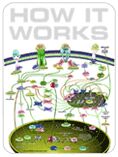誘導多能干細胞PCR芯片 Induced Pluripotent Stem Cells PCR Array

誘導多能干細胞PCR芯片 Induced Pluripotent Stem Cells PCR Array
誘導多能干細胞PCR芯片 Induced Pluripotent Stem Cells PCR Array
運費 ¥0.00
| 地區: | 上海 |
| 簡介: | Induced Pluripotent Stem Cells PCR Array |
| 提供商: | SAB |
| 服務名稱: | Induced Pluripotent Stem Cells PCR Array |
Keratinocyte: CDH1, GJB2, KRT15, NUMB. Blood Stem Cell: CD34. Fibroblast: COL1A1, NCAM1. Neuronal Stem Cell: EMX2, FABP7, NES, OLIG2. Cardiomyocyte: PECAM1. Germ Cells: SYCP3. Induced Pluripotent Stem Cells: iPSC Markers: DNMT3B, PODXL, ZFP42. Other iPSC-Related Genes: ACTC1, ALDH1A1, ALDH2, APC, BGLAP, BMP2, BRIX1 (BXDC2), CCNE1, CD9, CDH2, COL2A1, COL9A1, EP300, FGF4, FGFR1, FOXD3, GABRB3, GJA1, GRB7, HDAC2, KAT2A, KAT7, KAT8, LEFTY1, LEFTY2, NODAL, PARD6A, REST, RUNX2, TERT. Reprogramming Factors: KLF4, MYC, POU5F1 (Oct3/4), SOX2. Other Reprogramming Factors: ESRRB, LIN28A, NANOG, MYCN, NR5A2. Reprogramming Enhancers & Inhibitors: AICDA, TP53, UTF1. Embryonic Stem Cells: ESC Markers: ALPL, GDF3, TDGF1 (CRIPTO), TERT. Other ESC-Related Genes: CCNA2, CDK1 (CDC2), CDC42, DPPA2, DPPA3, FGF2, HSPA9, MYBL2, OTX2, SOX15, TBX3, TCF3. Pluripotency Markers: ALPL, DNMT3B, FGF4, FOXD3, GDF3, LEFTY1, LEFTY2, NODAL, PODXL, UTF1, ZFP42. Early Differentiation Markers: Ectoderm: COL1A1, NCAM1, NES, PAX6, TUBB3. Mesoderm: CD34, GATA2, HAND1, MESP1, PECAM1, RUNX1. Endoderm: FOXA2, GATA4, HNF4A, SOX17. Housekeeping Gene: NAT1. Somatic Cell Markers: Keratinocyte: CDH1, GJB2, KRT15, NUMB. Blood Stem Cell: CD34. Fibroblast: COL1A1, NCAM1. Neuronal Stem Cell: EMX2, FABP7, NES, OLIG2. Cardiomyocyte: PECAM1. Germ Cells: SYCP3. Induced Pluripotent Stem Cells: iPSC Markers: DNMT3B, PODXL, ZFP42. Other iPSC-Related Genes: ACTC1, ALDH1A1, ALDH2, APC, BGLAP, BMP2, BRIX1 (BXDC2), CCNE1, CD9, CDH2, COL2A1, COL9A1, EP300, FGF4, FGFR1, FOXD3, GABRB3, GJA1, GRB7, HDAC2, KAT2A, KAT7, KAT8, LEFTY1, LEFTY2, NODAL, PARD6A, REST, RUNX2, TERT. Reprogramming Factors: KLF4, MYC, POU5F1 (Oct3/4), SOX2. Other Reprogramming Factors: ESRRB, LIN28A, NANOG, MYCN, NR5A2. Reprogramming Enhancers & Inhibitors: AICDA, TP53, UTF1. Embryonic Stem Cells: ESC Markers: ALPL, GDF3, TDGF1 (CRIPTO), TERT. Other ESC-Related Genes: CCNA2, CDK1 (CDC2), CDC42, DPPA2, DPPA3, FGF2, HSPA9, MYBL2, OTX2, SOX15, TBX3, TCF3. Pluripotency Markers: ALPL, DNMT3B, FGF4, FOXD3, GDF3, LEFTY1, LEFTY2, NODAL, PODXL, UTF1, ZFP42. Early Differentiation Markers: Ectoderm: COL1A1, NCAM1, NES, PAX6, TUBB3. Mesoderm: CD34, GATA2, HAND1, MESP1, PECAM1, RUNX1. Endoderm: FOXA2, GATA4, HNF4A, SOX17. Housekeeping Gene: NAT1. |








